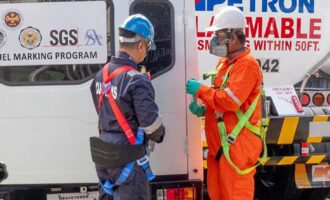
China’s 6a emissions standards kicks in after six-month delay
Light-duty vehicles (3.5 tons or below) in China are now required to meet China 6a standards effective January 1, 2021, after delaying its implementation by six months due to the Covid-19 pandemic. Effective July 1, 2021, heavy-duty vehicles also will be subject to China VIa standards.
Automakers and industry associations had called for the extension, to help the industry cope with the market downturn due to the Covid-19 pandemic.
In December 2016, the Ministry of Environmental Protection (MEP) issued the final version of the China 6 standard for both gasoline and diesel vehicles. The China 6 standard, with original implementation dates of July 1, 2020 for China 6a and July 1, 2023 for China 6b, is one of the most stringent emission standards around the world.
According to Lubrizol360.com, the measures taken as part of China 6’s implementation will remove many thousands of tons of serious pollutants, including particulate matter (PM) and oxides of nitrogen (NOx) from the country’s air. Further, the emissions standard is being combined with new fuel economy legislation that applies to both passenger cars and commercial vehicles, requiring Original Equipment Manufacturers (OEMs) to hit increasingly high fuel economy targets all while dramatically reducing emissions.
The website explains why China 6 is so challenging. China 6 is based on several important criteria that reduce emissions, including real driving emissions (RDE) testing, emissions durability and in-use compliance. RDE measures key emissions over a range of real conditions using portable emissions measurement systems. China 6b, scheduled for introduction in 2023, includes a wider range of RDE conditions than the EU’s Euro 6 standard, including higher altitudes for passenger cars and, for commercial vehicles, a range of loads from 10% to 100% capacity. As a result, China 6 will be far more challenging than Euro 6—making it the world’s most challenging emissions standard, according to global additive producer Lubrizol’s website.
OEMs must also demonstrate emissions durability, i.e., that their vehicles are capable of low emissions throughout their full useful life. China 6 implements these measures to ensure the air quality benefits brought by the standard are long term. Finally, in-use compliance will be monitored via on-board monitoring (OBM) for emissions performance on most vehicles, with significant penalties issued for non-compliance.
Advanced hardware and aftertreatment: Because of these challenging criteria, there are a number of key technologies that OEMs will likely utilize to remain in compliance with China 6. In the passenger car segment, the main engine technology used in compliant vehicles going forward will be turbocharged gasoline direct injection (TGDI) engines. These engines combine high power and fuel efficiency and are often downsized to take advantage of their power density. Electrified and hybrid vehicles are also expected to gain major traction in the marketplace as OEMs work toward fuel economy targets. Heavy-duty diesel engines, meanwhile, will be more subtly tweaked. Fuel injection pressures will continue to rise, along with better injection control and multiple injections per stroke. Steel pistons with optimized combustion bowls will be used, and optimized turbocharging will be used to improve combustion.
China 6 also introduces a particulate number limit for all vehicles, irrespective of engine technology, and these requirements will necessitate widespread adoption of gasoline and diesel particulate filters (GPFs and DPFs). These devices are being introduced by all OEMs, and they are effective at removing more than 90% of particulates—but they bring with them some critical new considerations for lubricant technology, Lubrizol said.








.jpg)
